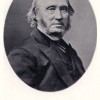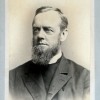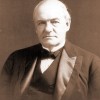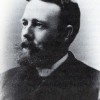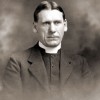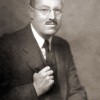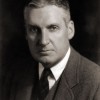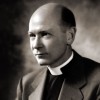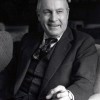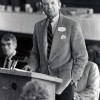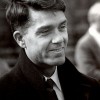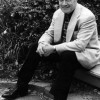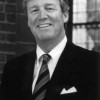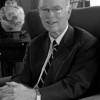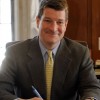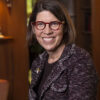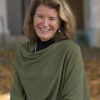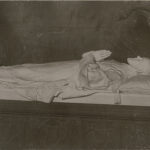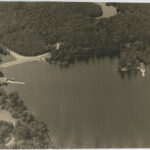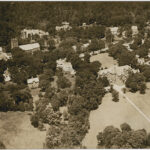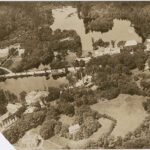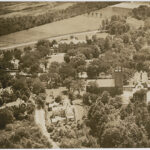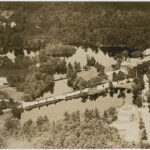Since its founding in 1856, St. Paul’s School is fortunate to have enjoyed strong leadership in its Rectors. Each has been wholly invested in the academic success and well-being of the students, and each brought with him unique gifts and talents to ensure a successful future for the School. The Rectors Exhibit presents the succession of these leaders through photographs and short biographies, serving as a brief introduction to the fascinating history of leadership at St. Paul’s School.
Much of the text and perspectives shared in the brief biographies that accompany photographs of the Rectors was drawn directly from two authoritative and well-loved volumes about St. Paul’s School: A Brief History of St. Paul’s School, 1856-1996 by August Heckscher (located in Ohrstrom at: 373 Sa2H) and St. Paul’s School, 1855 – 1934 by Arthur Stanwood Pier (located in Ohrstrom at: 373 Sa2). In addition to reading those two volumes, you can find more fascinating detail on each of the Rectors by searching the Alumni Horae digital archive, accessible online by clicking HERE.
Click on the thumbnails above or the titles below to access the individual catalog pages.
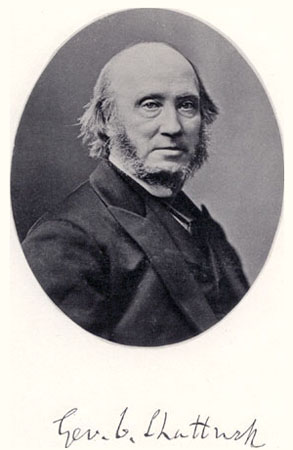
Dr. George Cheyne Shattuck, Jr. was born in Boston on July 22, 1813, and attended Round Hill School, Harvard College, and Harvard Medical School. In 1840 he began the practice of medicine in Boston and later became a professor and dean of Harvard Medical School. The impressions he formed while at Round Hill School inspired him and were influential in his decision to found St. Paul’s School in 1855.
Dr. Shattuck believed that while the intellect can be trained and the mind furnished at a day school,
. . . physical and moral culture can best be carried on where students live with and are constantly under the supervision of the teachers, and in the country….Green fields and trees, streams and ponds, beautiful scenery, flowers and minerals are educators. The things which are seen are very valuable, and may be used to teach of Him who made them, and thus of the things unseen.
Dr. Shattuck was a Trustee of the School from 1855 until his death in 1893.
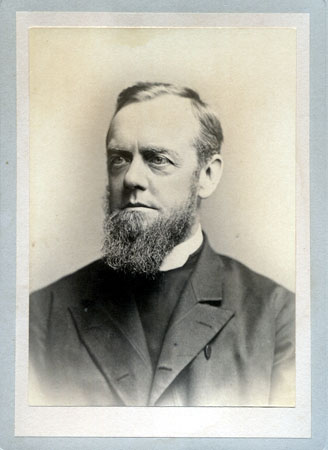
The Reverend Dr. Henry Augustus Coit was born January 20, 1830. He attended both St. Paul’s College in Flushing, New York, and St. James College in Maryland, and then studied for the ministry. He was ordained as a priest in the Episcopal Church in 1854 and performed missionary work in western New York State. In 1855 he was elected to serve as First Rector of St. Paul’s School, and on April 3, 1856, he and Mrs. Coit arrived in Concord along with the School’s first three students. The Reverend Dr. Coit served as Rector from 1856 until his death in 1895; he was a great and positive influence in the lives of generations of St. Paul’s students.
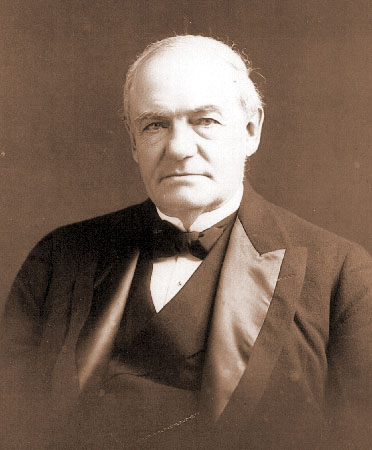
In June 1895 the Trustees elected the Reverend Dr. Joseph Howland Coit as the School’s Second Rector. For thirty years the Reverend Dr. Coit had served as Vice Rector. He was devoted to his brother the Reverend Dr. Henry Coit, the First Rector of St. Paul’s School, and absolutely loyal to his policies. In a letter to Trustee Samuel Eliot, he wrote:
I am trying to honor his memory by a faithful, untiring but humble effort to keep alive the methods, the traditions, the spirit with which he conducted the school.
The Reverend Dr. Joseph Coit served the School faithfully as Rector from 1895 until his death in 1906.
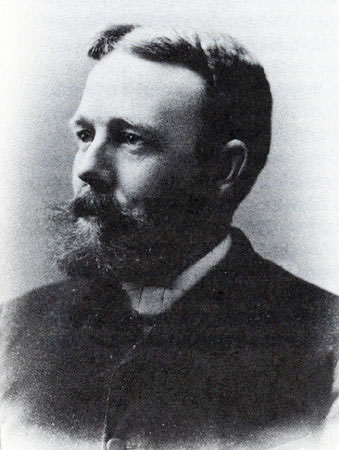
On February 9, 1906, the Trustees elected as Third Rector the Reverend Dr. Henry Ferguson, professor of history and political science at Trinity College in Hartford, Connecticut. The Reverend Dr. Ferguson had himself been a student at St. Paul’s School from 1859 to 1864, had sent two sons to the School, and had served as a Trustee for seventeen years. He was one of the School’s most generous benefactors. The Reverend Dr. Ferguson’s administrative style facilitated a transition away from fifty years of intense paternalism toward a culture more hospitable to progressive and modern ideas.
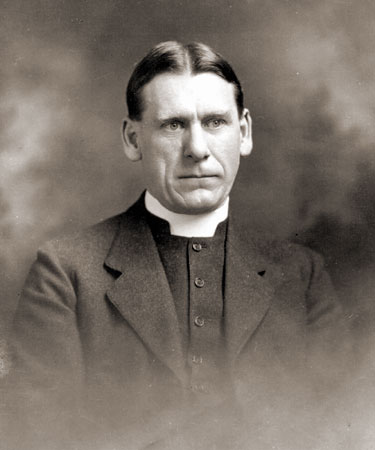
The Reverend Dr. Samuel Smith Drury arrived at St. Paul’s School to serve as Vice Rector in April 1910. In June 1911 he succeeded the Reverend Dr. Ferguson and became Fourth Rector, serving in that position for the next twenty-seven years until his death in 1938. Pier’s St. Paul’s School 1855-1934 states that:
. . . the main results of Dr. Drury’s administration up to the present time are four: closer attention to scholarship, a freer and better standard of conduct, a more liberal yet not less devout attitude towards religion, and a friendlier relationship between boys and masters.
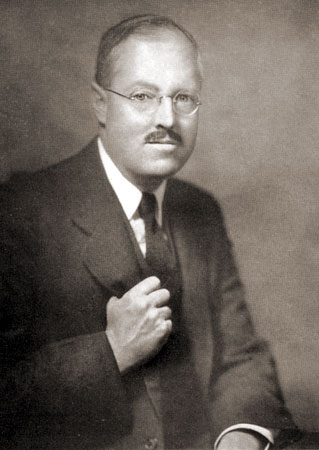
May the education, even of the oldest of us, have only begun; and may He continue to teach us all, young and old, to learn and love wisdom all our days. – The Reverend Norman Burdett Nash
The Reverend Norman Burdett Nash was elected Fifth Rector in December 1938 and took office in September 1939. He had graduated from Harvard in 1909 and afterward studied for the ministry at Episcopal Theological School in Cambridge, where his father, Henry Sylvester Nash, had been a notable teacher and scholar. The Reverend Mr. Nash was likewise a scholar, and after service in World War I, he returned to ETS as a professor of Christian social ethics from 1919 until he became Rector of St. Paul’s in 1939.
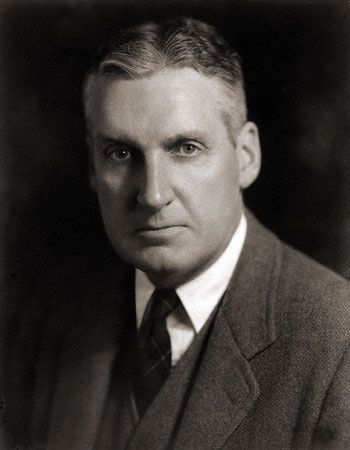
At a meeting of the Trustees on May 22, 1947, Henry Crocker Kittredge was elected Sixth Rector of St. Paul’s School, and the first layman Rector in the School’s history. Mr. Kittredge had been a master of Latin and English at SPS from 1916 to 1938. He served as Acting Rector from 1938 to 1939, until the election of the Reverend Mr. Nash. He served under the Reverend Mr. Nash as Vice Rector from 1939 to 1947. The St. Paul’s community looked to the new Rector with affection and confidence. He knew the School, and beneath his easy manner were mature convictions about the nature of SPS students, the methods of teaching, and the destiny of the School. Mr. Kittredge’s long career as a successful teacher had afforded him deep insight into teaching and learning. As August Heckscher noted in his history of the School, Kittredge:
. . . envisaged a school where boys would step across the threshold of a classroom – as not long since they had stepped across his – feeling an anticipatory thrill, and where each boy would leave the room “wiser and better than when he entered it.”
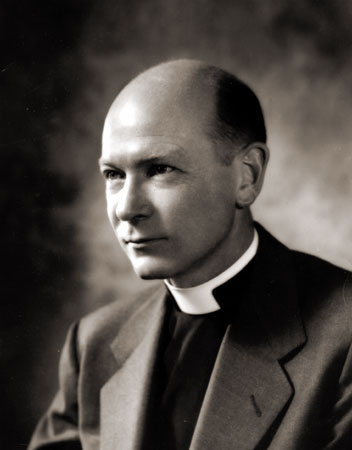
The Reverend Dr. Matthew Madison Warren became the Seventh Rector of St. Paul’s School in the summer of 1954 and retired in March of 1970. During those sixteen years, the School, like the country, experienced a wide range of changes. In 1954, when the Reverend Dr. Warren became Rector, the School offered a six-year course of instruction, with an emphasis on the classical and the sacred. In addition to the academic requirements, every week a student had to attend twenty-one seated meals, eight Chapel services, and athletics every afternoon. When compared to SPS in 1900, the School by 1954 had grown in size, and its curriculum had become more modern and demanding. The Reverend Dr. Warren steered the School through the tumult of the late 1960s, at the end of which St. Paul’s School was a changed place. Still, the fundamental aim of the School was the same: to educate the whole person.
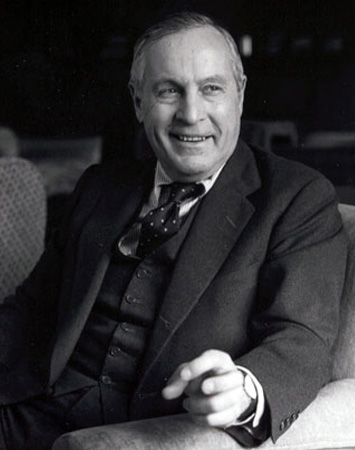
William (Bill) Oates, who had been a member of the faculty since 1942 and had served under three rectors – Nash, Kittredge, and Warren – became the Eighth Rector of St. Paul’s School on March 12, 1970. Beginning at St. Paul’s School as a teacher of history and mathematics and as a coach of Delphian teams, Mr. Oates served as a housemaster of Manville and continued through a series of appointments as registrar, director of admissions, administrative Vice Rector, and, finally, Rector.
The scope of Mr. Oates’ achievements were wide-ranging and are still felt today. His rectorship ushered in coeducation, along with a more structured residential life program on campus that incorporated new policies on dress code, inter-visitation and disciplinary processes. Initiatives in the academic realm included creation of the School Year Abroad and Independent Study programs, as well as the internship program for young faculty. Critical offices such as Human Relations and Development were integrated into the School’s infrastructure. While some buildings such as the Lower School were demolished, others including the performing arts venues, were erected. Mr. Oates paid special attention to alumni. During his administration, the Alumni Office was moved to Concord, the role of Form Agents was established, and the School invigorated its outreach to parents. Finally, Mr. Oates celebrated victories at the Henley Regatta and presided over the School’s 125th Anniversary.
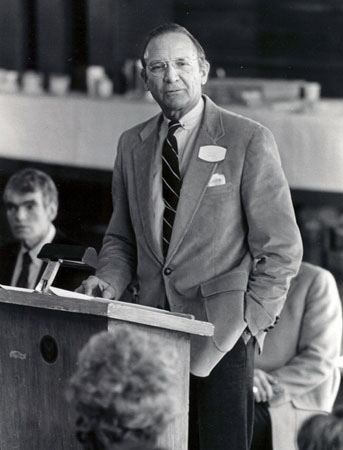
Born in New York City in 1926, the Reverend Dr. Clark spent his childhood in Coronado, California, and graduated from The Thacher School. He served two years with the United States Navy before entering Yale with the class of 1948. Awarded a master of divinity degree from the Episcopal Theological Seminary in Virginia in 1952, he received an M.A. in Old Testament studies from Yale in 1956. Ordained in the Diocese of New York, the Reverend Dr. Clark served as curate at Grace Episcopal Church in Hamden, Connecticut, in 1952-1953, and as assistant chaplain of Yale University from 1953 to 1957. During the following decade his work with the Overseas Department of the Episcopal Church brought him many distinctive appointments, including service in Singapore and the Philippines. In 1977, he was elected dean of Yale’s Berkeley Divinity School.
The Reverend Dr. Clark oversaw a number of renovations of dormitories and classroom spaces, as well as the restoration of key buildings from the early years of the School. The construction and dedication of Ohrstrom Library in 1991 were marked under the Reverend Dr. Clark’s watch. Of particular note also were the celebrations surrounding the 100th anniversary of the Chapel of St. Peter and St. Paul in 1988.
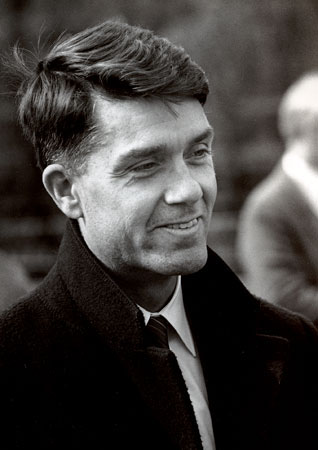
David Vern Hicks served as Tenth Rector of St. Paul’s School from 1992 to 1996. A 1970 graduate of Princeton University, Mr. Hicks was selected as a Rhodes Scholar and studied at Oxford from 1970 to 1972. He subsequently took up a commission in the United States Navy and was a member of the faculty of the Navy War College, where he taught from 1973 to 1975. He also held faculty positions at Briarcliff College and the Westminster Schools in Atlanta, and then served as Headmaster of St. Mark’s School of Texas from 1983 until his election to St. Paul’s School in 1992. One of the initiatives begun during Mr. Hicks’ tenure was a comprehensive review of the curriculum, which resulted in the creation of the Residential Life and Humanities programs.
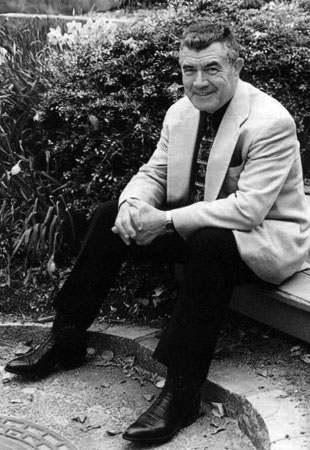
Clifford J. Gillespie, Jr., began his career as a science teacher at SPS in 1964. A cum laude graduate of the University of New Hampshire, where he also received a master’s degree, Mr. Gillespie was an All-American lacrosse player and a varsity football player. Before coming to St. Paul’s School, Mr. Gillespie taught at Proctor Academy in Andover, New Hampshire. During his thirty-three years at St. Paul’s School, Mr. Gillespie served as a head of house, head of the science department, coach in two varsity sports and of numerous club teams, Dean of Students, and Interim Rector. Mr. Gillespie was affectionately called the “Rocktor,” derived from his nickname, “The Rock.”
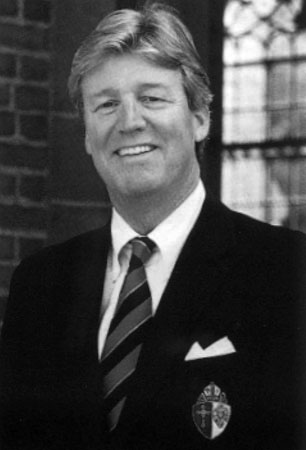
The Right Reverend Dr. Craig Barry Anderson was elected as the School’s Eleventh Rector in 1997. Bishop Anderson was born in Los Angeles and graduated from Valparaiso University. He later attended seminary at the University of the South and was ordained to the Episcopal priesthood in 1975. Bishop Anderson continued his educational pursuits at Vanderbilt University, where he received his M.A and Ph.D. in theology. Bishop Anderson returned to the University of the South in 1978 and taught theology. In 1984 he was elected the eighth diocesan bishop of South Dakota. In 1993 Bishop Anderson became President and Dean of The General Theological Seminary in New York City. From that position he was elected to become Eleventh Rector of St. Paul’s School. He served as Rector at SPS from 1997 until 2005. Among the significant projects undertaken during his tenure were the renovation of and addition to the Hockey Center and the building of the Athletic and Fitness Center in 2004.
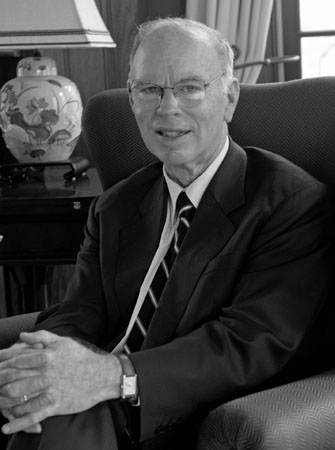
When the Chapel bells rang in the news of the appointment of the Twelfth Rector of St. Paul’s School on January 10, 2006, the St. Paul’s School community was welcoming one of its own to head the School. Reminiscent of Rectors from the School’s early history, many of whom had long histories at St. Paul’s before serving as Rector, it was fitting in the School’s Sesquicentennial year that the School’s Twelfth Rector was Bill Matthews, with his five-decade history at the School as student (Form of 1961), teacher, coach, and administrator. Mr. Matthews had served as Interim Rector since the previous May.
One of Mr. Matthews’s first challenges as Rector was to guide the School through the “Mother’s Day flood” of 2006 and to oversee its subsequent recovery and rebuilding. That summer he initiated a rigorous strategic-planning process, with community-wide representation in the kind of open environment on which he insists, with frequent communication to all constituencies. The guide for School decision-making during his tenure as Rector, the Strategic Plan emphasizes academic excellence, community life, environmental sustainability, diversity, a global view, and service to others. Encouraging student leadership through service is a primary focus for Mr. Matthews, who frequently invokes the School Prayer’s admonition to “bear the burdens of others.” The same theme is echoed in the St. Paul’s School Mission Statement, which Mr. Matthews re-drafted in collaboration with students, faculty, staff, and Trustees. In 2010, St. Paul’s School Trustees announced the completion of fund raising for the Lindsay Center for Mathematics and Science, the most ambitious capital project of Mr. Matthews’s rectorship.
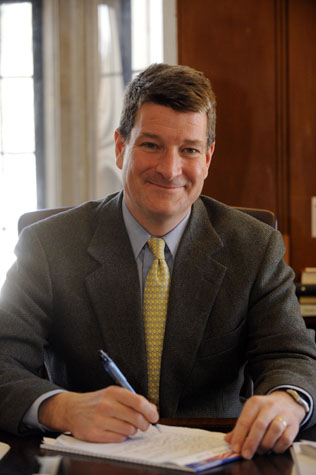
In Chapel on November 19, 2010, Trustee President Douglas Schloss ’77 announced the appointment of Michael Gifford Hirschfeld ’85 as the Thirteenth Rector of St. Paul’s School. Hirschfeld succeeds Twelfth Rector William R. Matthews, Jr. ’61, who retired in June 2011 after 45 years at the School – the last six of them as its Rector.
At the time of his election by the Board, Mr. Hirschfeld served as the vice rector for external affairs at St. Paul’s. In that capacity he oversaw the development, alumni relations, admissions, college advising, and communications offices.
The Rector joined the St. Paul’s faculty in 1994 and has since taught history and humanities (1999-2003) and served as associate director of college advising (1999-2003), director of admissions (2003-06), and vice rector for enrollment and communications (2006-07). He began his career in education at the Kent School, where he taught history and was assistant director of admissions (1990-94). He was also a coach of the SPS boys crew program for many years.
Mr. Hirschfeld received an A.B. in history in 1990 from Princeton University, where he captained the varsity lightweight crew to the 1989 national championship. He later earned an M.A. in liberal studies in 1999 from Dartmouth College.
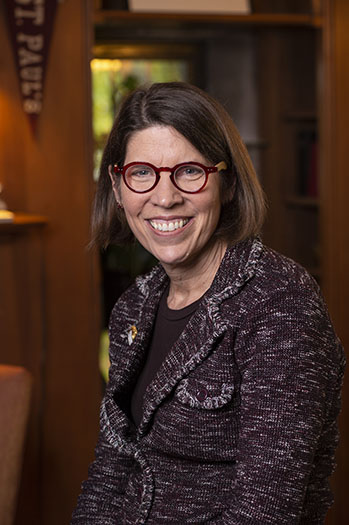
The St. Paul’s School Board of Trustees has announced the selection of Amy C. Richards as Interim Rector for the 2018-19 academic year in recognition of her remarkable skill set and outstanding leadership qualities.
Ms. Richards comes to St. Paul’s School after 14 years as Head of the Crystal Springs Uplands School in Hillsborough, Calif. Before that, her multi-faceted career in education includes administrative responsibilities as dean of students at Riverdale Country School in Riverdale, N.Y., and as the head of the upper school at The Spence School in New York, N.Y. Ms. Richards is also known and respected by many in the St. Paul’s School family. She taught mathematics at SPS from 1984 to 1994 and directed the ASP in 1994.
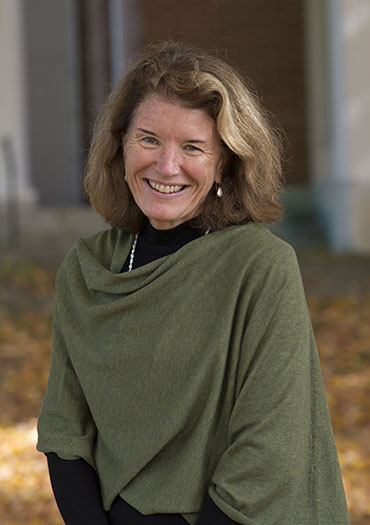
The Board of Trustees has unanimously approved the appointment of Kathleen Carroll Giles to serve as the Fourteenth Rector of St. Paul’s School, starting July 1, 2019. Mrs. Giles brings long experience and appreciation for the merits of boarding school life to the role.
Mrs. Giles currently serves as head of school at the Middlesex School in Concord, Massachusetts, a position she has held since 2003. From 1990 to 2003 she worked at the Groton School in a variety of roles, including dean of academic affairs, college advisor, English teacher, and coach. Mrs. Giles holds a Master’s in Education degree, a Juris Doctor degree, and an undergraduate degree from Harvard University.
Mrs. Giles has the skills and experience to continue developing the SPS educational model, with a focus on building an inclusive, strong living and learning community for everyone.

